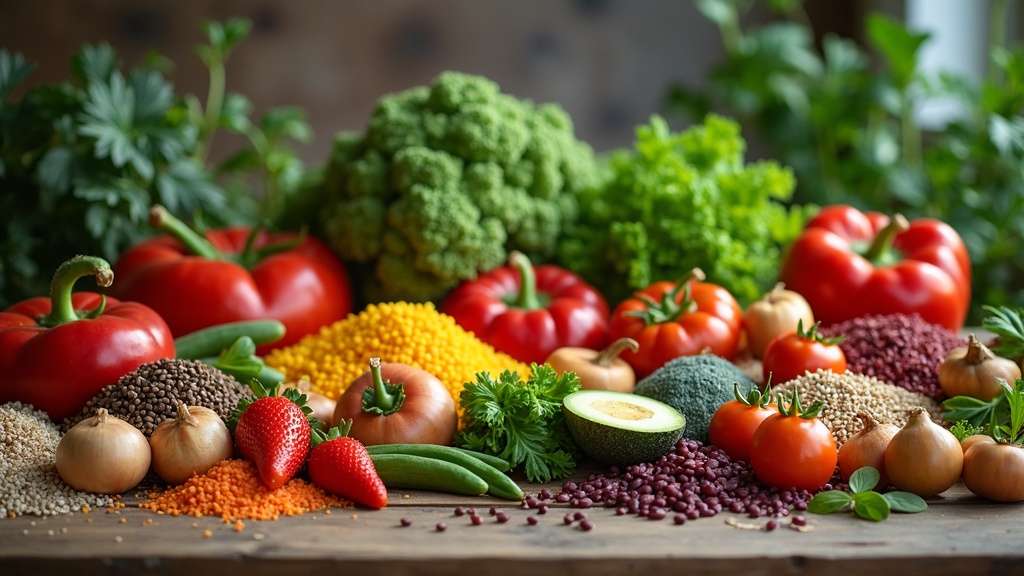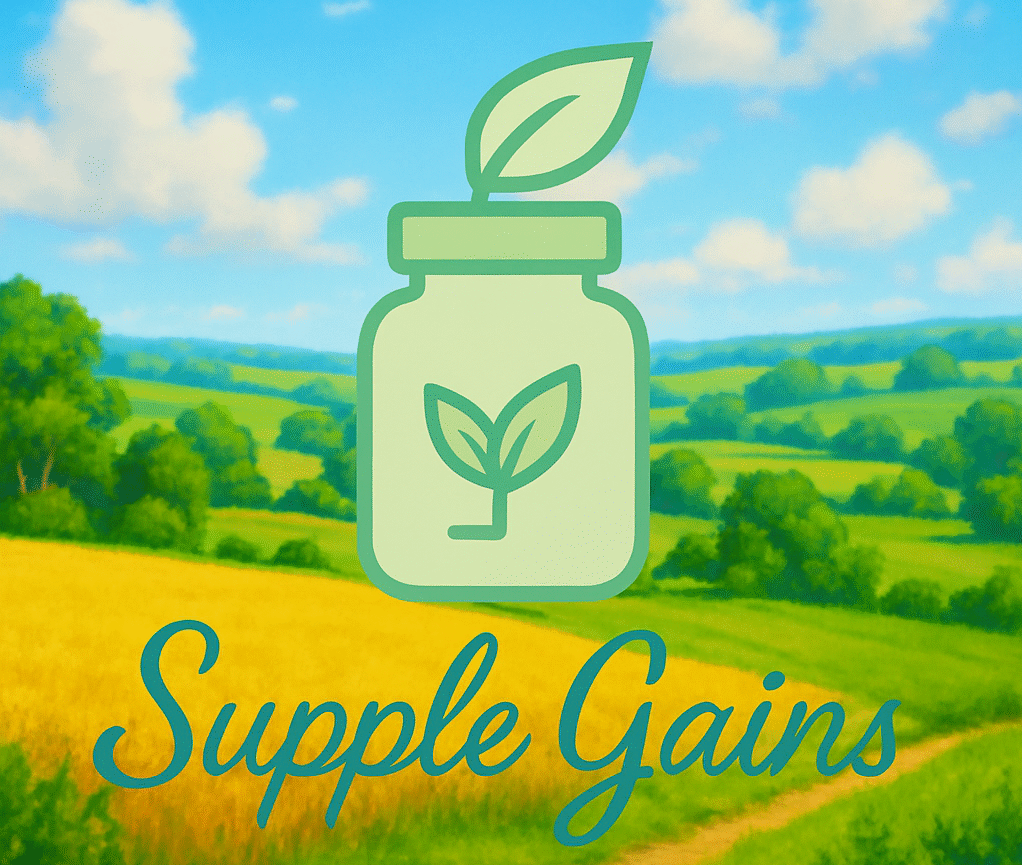Social media trends have a real knack for shaking up all sorts of habits, including the way people eat and think about sustainability.
These kind of feeds are full of claims about plantbased diets, viral ecofriendly recipes, and food influencers who make sustainable eating look both creative and accessible.
It’s clear that what’s trending online has a way of working its way into grocery lists and daily food choices.
In this post, I’m going to dig into how these trends actually affect sustainable eating habits, what it means for our planet, and what to watch out for if you want to stay mindful while scrolling.

How Social Media Trends Shape What We Eat
Scrolling through any social platform, it’s easy to spot how popular food trends take off almost overnight.
A viral recipe video or a creative food challenge can end up on millions of screens, inspiring people to get adventurous in their kitchens.
Social media campaigns highlighting plantbased meals, zerowaste cooking, or upcycled ingredients have pushed these topics into the mainstream.
Trendy hashtags like #MeatlessMonday, #SustainableEating, and #ZeroWasteCooking get huge traction, with influencers and everyday users showing off their latest sustainable uses of leftovers or a veggiepacked lunchbox.
Many of these trends focus on reducing food waste, eating more plants, and swapping out singleuse packaging for reusable alternatives.
For those looking to make better choices, this kind of content provides loads of inspiration and sometimes a helpful nudge in the right direction.
The influence doesn’t stop with the content itself.
The interactive nature of social media means people can ask questions, share their results, and build a sense of community around sustainable eating practices.
It no longer feels like a niche lifestyle.
Thanks to social platforms, the conversation around climatefriendly diets is bigger and more mainstream than ever.
Positive Impacts: Social Media as a Sustainability Driver
It’s pretty clear to me that social media has played a role in making sustainable eating more popular and less intimidating.
Getting good ideas and motivation for eating well is so much easier now than it was even just a few years ago.
Here are a few standout ways these trends are encouraging change for the better:
- Accessible Information: Short videos, companion infographics, and howto guides make it simple to learn about plantbased swaps, cutting down on food waste, or sustainable sourcing, often in less than a minute.
- Community Support: Online groups and hashtags create spaces for swapping tips and cheering each other on, whether you’re trying to go vegetarian, use more seasonal produce, or buy from local farmers.
- Visibility for Small Producers: Social media helps smallscale farmers, sustainable food brands, and independent grocers reach audiences that care about environmental impact and ethical sourcing.
- Creative Value: Sharing bright, beautiful photos of plantbased meals or ‘ugly’ produce recipes helps switch up the perception that sustainable eating is boring or unappealing.
I’ve watched some of my own friends cut down on meat after seeing an engaging documentary promoted through an Instagram story, or join a bulkbuying coop thanks to TikTok videos on zerowaste shopping.
These small daily changes, multiplied by millions, end up sparking bigger shifts in food system demand and supply.
Challenges and Hidden Pitfalls of TrendDriven Sustainable Eating
Of course, it’s not all smooth sailing.
The fastpaced and viral nature of social media creates its own set of problems when it comes to longterm sustainable habits.
- Sustainability “Hype”: A trend can make an eating style or food product look like a miracle solution without always showing the full context. Examples include massive surges in demand for avocados or quinoa, which have sparked worries about overfarming and supply chain sustainability in their home countries.
- ShortTerm Thinking: Since social media lives on novelty, people sometimes jump in for the fun of a challenge, like a week of ‘plasticfree lunches,’ but fall back into old habits once the buzz dies down.
- Misinformation: With so many voices online, it’s tough to separate wellintentioned tips from advice that’s not really backed by science. Vegan alternatives, for instance, can sometimes be highly processed or use ingredients shipped halfway across the world, muddying their actual sustainability impact.
- Accessibility Issues: Mainstream trends often focus on foods, tools, or brands that might not be affordable or easy to get everywhere, which can leave some people feeling excluded.
The speed of social media, in my experience, can sometimes work against true, lasting behavior change.
Trends move fast, while real lifestyle shifts, like learning to shop in season, reduce packaging, or adopt a new diet, usually require way more time and patience.
How to Spot Genuine Sustainable Eating Trends Online
Finding your way through the maze of online advice gets a lot easier when you know what to look for.
I’ve picked up a few strategies for telling the difference between clickbait and genuinely helpful tips on eating more sustainably:
- Check the Source: Look for recipes, shopping tips, or nutrition advice that comes from registered dietitians, environmental groups, or sustainability experts rather than just influencers.
- See the Bigger Picture: Genuine content often talks about seasonality, local sourcing, and the importance of progress over perfection, instead of pushing a single “superfood” or quick fix.
- Look Out for Transparency: A good sign a post is reliable is when it shares facts, links out to credible research, or admits the complexities of food choices (like, “This milk alternative is great, but check if it’s produced locally in your area for the best impact”).
- Small Steps Over Extremes: Trends pushing allornothing challenges or unrealistic standards can be demotivating. Stick with creators who keep their tone positive and realistic, encouraging gradual change.
Taking a few minutes to read beyond the first caption or headline pays off.
Reliable accounts usually don’t make huge claims and often welcome questions or thoughtful discussion in the comments.
Ways to Use Social Media for Sustainable Eating Goals
When used mindfully, social media can be a pretty handy tool for building better eating habits.
Here are a few ways I use it to stay motivated and accountable:
- Meal Planning Inspiration: Following feeds focused on ‘climatefriendly eating’ and zerowaste recipes gives plenty of ideas for what to cook next, helping avoid decision fatigue and lastminute food waste.
- Swapping and Sharing: Posting about challenges or successes with sustainable eating can bring in tips, encouragement, and even practical solutions from others, whether it’s swapping out disposable coffee pods or finding recipes for leftover veggies.
- Tracking Progress: Documenting changes, like switching to reusable produce bags or choosing local food in season, helps me see small wins over time. The community aspect makes it easier to stick with changes.
- Learning From Mistakes: Honest posts about setbacks (and seeing others share the same) makes it less intimidating to get back on track when new habits slip.
Social media isn’t a perfect solution, but when used well, it helps keep things fun and social, rather than feeling like a solo project.
Everyday Sustainable Eating: Examples and Success Stories
Realworld impact is what counts, so I’m always happy when I come across examples of people who use social media trends as a jumpoff for actual, practical changes.
Here are a few I find inspiring:
- ZeroWaste Lunchbox Challenges: Students and families showcase packable meals with compostable wraps and reusable containers, helping to start conversations about reducing school lunch trash.
- Foraging and Seasonal Cooking: Local chefs sharing posts on wild herbs or seasonal fruit picking, connecting their followers to old traditions that naturally support biodiversity.
- PlantBased But BudgetFriendly: Creators sharing affordable plantbased meal plans and shopping guides, breaking down the myth that sustainable eating is expensive.
- CommunityLed Food Swaps: Neighborhood groups organize food swaps, making it easier to use up surplus produce or bread before it goes to waste, with people posting about their creative finds online.
For more resources or factchecked information, it’s worth checking out organizations like the Environmental Working Group or the Food and Agriculture Organization, which share tips, data, and up-to-date research on sustainable food systems.
You can find free downloadable guides, seasonal shopping lists, and a wide range of fact sheets tailored for different diets and lifestyles.
Don’t forget to explore channels from local agricultural extensions or urban gardening communities; they offer hands-on tips for your unique climate and neighborhood.
Another excellent example is the rise of home composting tutorials and upcycling kitchen scraps.
Social media groups now provide step-by-step guides for turning food waste into nutrient-rich compost, inspiring both first-time gardeners and seasoned plant lovers alike.
By connecting like-minded individuals and offering constant updates, these platforms keep people excited about sustainability and everyday wins—no matter how small.
Frequently Asked Questions
Here are some common questions I’ve heard from friends and readers when it comes to social media and sustainable eating:
Question: Is going vegan the best way to eat sustainably?
Answer:
Eating more plants is usually better for the planet, but choosing local, seasonal foods and watching for highly processed plantbased options is just as important.
The most sustainable diet is the one you can actually follow long term.
Question: How do I know which social media creators to trust about sustainable eating?
Answer:
Look for those who share facts, admit the complexity of food systems, and aren’t afraid to share sources.
Credentials in nutrition, farming, or environmental science add credibility, but so does practical experience and honest storytelling.
Question: I want to start eating more sustainably but don’t know where to begin. What should I try first?
Answer:
Try one plantbased meal per week, shop with a list to reduce food waste, or start following hashtags like #SustainableEating for fresh ideas.
Pick small, easy wins and build from there.
Wrapping Up
Social media trends play a big role in shaping how people think about and practice sustainable eating.
When you scroll with a bit of patience and curiosity, you’ll find plenty of inspiration to make eating habits greener and more planetfriendly.
A little skepticism and some common sense go a long way.
With so much creativity online, building small, practical changes into daily routines can be a whole lot of fun.
